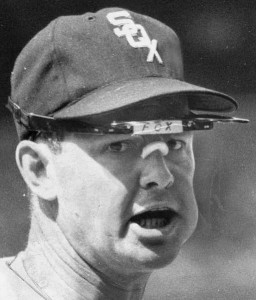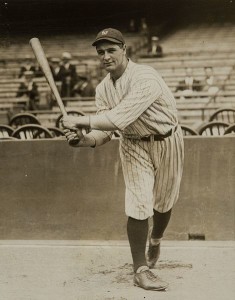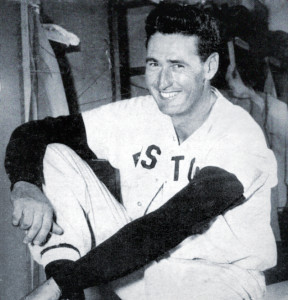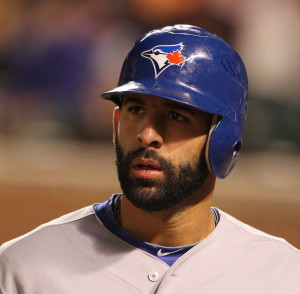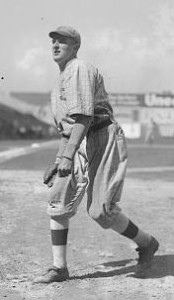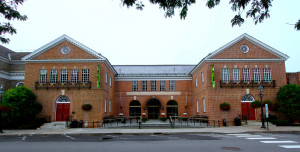In my last post, I took a look at some of baseball’s best and worse nicknames. (Click here to see that post.) A baseball name search can be both interesting and addictive. For example, while researching nicknames, I found that Ken “The Kid” Griffey, Jr. and Tom “Tom Terrific” Seaver shared the given name “George,” but were known in baseball circles by their middle names. I also reaffirmed that Lou “Iron Man” or “Bisuit Pants” Gehrig, who made both the best and worse nickname lineups, was actually named Henry Luis Gehrig. So, in this post, I’d like to examine players who are known to fans not by their given names, but rather by their middle name.
I made the middle-namers’ lineup a little tougher to fill, selecting only players I have seen play for the starting nine. The additional players listed were selected because I expect most BBRT readers will be familiar with their names and accomplishments.
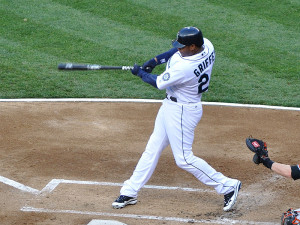
By GEORGE – those Griffey’s could play!
Photo: Jody Cloutier Photography
Pitcher: Tom Seaver … George Thomas Seaver
Seaver, a Hall of Famer, spent 20 seasons on the major league mound (1967-1986: Mets, Reds, White Sox, Red Sox). He was a 12-time All Star and three-time Cy Young Award winner. Seaver, who won 311 games, was a 20-game winner five times and led his league in wins three times, ERA three times, strikeouts five times, and shutouts twice.
A few other middle-name pitchers: Lew Burdette (Selva Lewis Burdette); Bert Blyleven (Rik Aalbert Blyleven); Dean Chance (Wilmer Dean Chance); Roger Clemens (William Roger Clemens); Nolan Ryan (Lynn Nolan Ryan).
Catcher – Tim McCarver … James Timothy McCarver
McCarver had a 21-season MLB career (1959-80: Cardinals, Phillies, Expos, Red Sox,) – hitting .271, with 97 home runs and 645 RBI. The two-time All Star has gone on to a successful career as a baseball broadcaster, earning three Emmy Awards.
Additional middle-name backstops: Rick Dempsey (John Rikard Dempsey); Randy Hundley (Cecil Randolph Hundley); Sherm Lollar (John Sherman Lollar).
First Base – Wes Parker … Maurice Wesley Parker III
Parker had a nine-year MLB career (1964-72, all with the Dodgers). An excellent fielder, Parker won six consecutive Gold Gloves. At the plate, he had a career .267 average, with 64 home runs and 470 RBI.
Additional middle-name first basemen: Chris Chambliss (Carroll Christopher Chambliss); Dale Long (Richard Dale Long).
Second Base – Nellie Fox … Jacob Nelson Fox
Fox, The a Hall of Famer had a 19-season MLB career (1947-65: Athletics, White Sox, Astros). He was an All Star in 12 seasons, won three Gold Gloves and was the 1959 AL MVP. He retired with a .288 career average, 35 home runs, 790 RBI and 1,279 runs scored.
Additional middle-name keystone sackers: Julian Javier (Manuel Julian Javier); Chuck Knoblauch (Edward Charles Knoblauch).
Third Base – Bob Horner … James Robert Horner
Horner had a ten-year MLB career (1978-88: Braves, Cardinals). He was the 1978 Rookie of the Year, hitting .266 with 23 home runs in 89 games for the Braves. His career average was .277, with 218 home runs and 685 RBI; and he topped 25 home runs in a season four times. He was an All Star in 1982.
Additional middle-name third basemen: Max Alvis (Roy Maxwell Alvis); Ray Knight (Charles Ray Knight); Mike Shannon (Thomas Michael Shannon).
Shortstop – Travis Fryman … David Travis Fryman
Frynan had a 13-year MLB career (1990-2002: Tigers, Indians) at shortstop and third base. He was a five-time All Star and one-time Gold Glove winner. His career stat line was .274-223-1,022.
Other middle-name shortstops: Wayne Causey (James Wayne Causey); Dal Maxvill (Charles Dallan Maxvill).
Left Field – Ken Griffey, Sr. …George Kenneth Griffey, Sr.
Griffey, Sr. had a 19-season MLB career (1973-91: Reds, Yankees, Braves, Mariners) – during which the three-time All Star hit .296, with 152 home runs, 859 RBI, 1,129 runs scored and 200 stolen bases.
Center Field – Ken Griffey, Jr. … George Kenneth Griffey, Jr.
Griffey Jr. played in the major leagues from 1989 through 2010, earning 13 All Star selections, ten Gold Gloves and the 1997 AL MVP Award. He led his league in home runs four times (reaching a high of 56 twice), runs scored once and RBI once. His career line was .284-630-1,836, with 184 stolen bases.
Right Field – Tommy Davis … Herman Tommy Davis
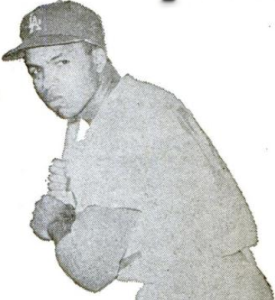 Davis had an 18-season MLB career (1959-76: Dodgers, Mets, White Sox, Pilots, Astros, Athletics, Cubs, Orioles, Angels, Royals). He was a two-time All Star and two-time batting champion (1962 and 1963 with the Dodgers). He had a career batting average of .294, with 153 home runs and 1,052 RBI.
Davis had an 18-season MLB career (1959-76: Dodgers, Mets, White Sox, Pilots, Astros, Athletics, Cubs, Orioles, Angels, Royals). He was a two-time All Star and two-time batting champion (1962 and 1963 with the Dodgers). He had a career batting average of .294, with 153 home runs and 1,052 RBI.
Additional middle-name outfielders: Dante Bichette (Alphonse Dante Bichette); Reggie Smith (Carl Reginald Smith); Gorman Thomas (James Gorman Thomas).
I tweet baseball @DavidBBRT
Member: Society for American Baseball Research (SABR); The Baseball Reliquary; Baseball Bloggers Alliance.
